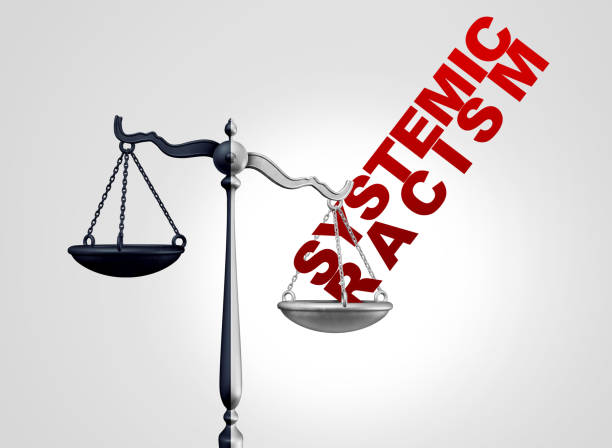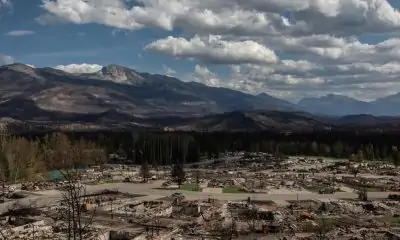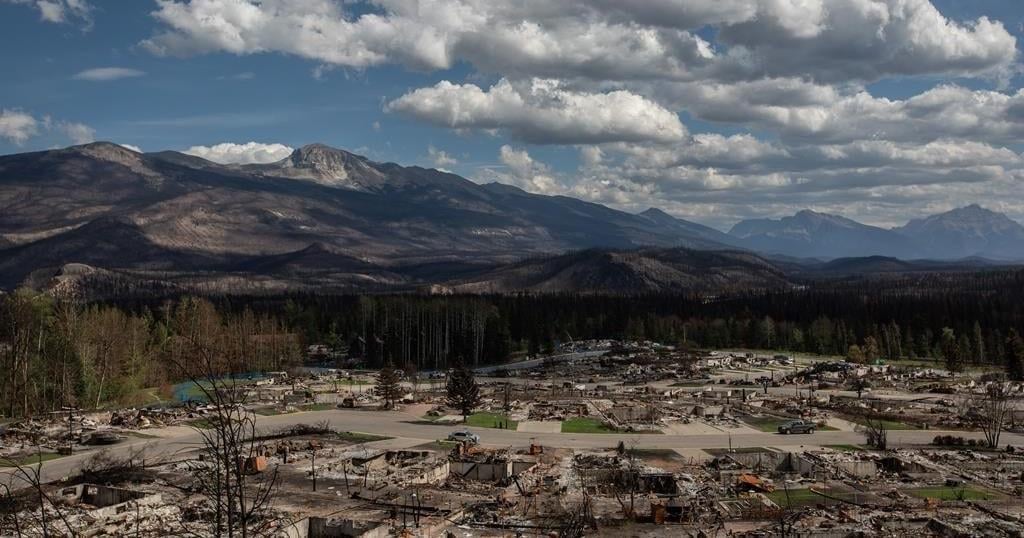Definition
Systemic racism should not be confused with systematic racism. Systemic refers to the concept of system. Discrimination within a system is not experienced systematically and is not always deliberate.
Systemic racism is often seen as the tendency within a group to systematically exclude or marginalize racialized people. It puts unfair obstacles in the way of non-white individuals who are trying to access such important resources as employment, accommodation or health care.
This phenomenon is often based on culture, as well as on the racist practices which exist in institutions or society as a whole. In Canada, historical examples include the segregation of Black people and the Indian Act. According to the Commission des droits de la personne et des droits de la jeunesse (CDPDJ), systemic racism is the result of decisions and actions based on race-related inequalities and discrimination. For others, this tendency results from the fact that the standards of the white majority are entrenched in the ways in which an institution functions. This results in a system which treats Indigenous and racialized people unfairly.
Anti-Indigenous Racism
Before 1497, before the arrival of Europeans, the northern part of Turtle Island,Footnote14 known today as Canada, was home to First Nations Peoples. The colonization of Canada began with the arrival of the first Europeans from Britain and France in the early 1600s. When Canada received its independence from Britain in 1867, it inherited treaty obligations: agreements established between First Nations Peoples as sovereign nations, and the British Crown.Footnote15 Canada soon began to assert control over Indigenous Peoples and lands with the Indian Act of 1867, which limited self-governance of First Nations Peoples and expanded authority over Indigenous lands and services.Footnote16
The application of the Indian Act continues to facilitate the reduction and elimination of Indigenous identities. This purpose, inherent in the Indian Act, was explicitly described by Duncan Campbell Scott, Canada’s Deputy Superintendent General of Indian Affairs, in 1920 when he remarked on the government’s policy by stating: “our objective is to continue until there is not an Indian that has not been absorbed into the body politic and there is no Indian question and no Indian Department.”Footnote17
The efforts to assimilate and erase Indigenous cultures continued in the 1870s through the establishment of Residential Schools. These were religious-based schools designed to strip traditional customs, spirituality and language from Indigenous children for the sake of integrating them into Euro-Canadian culture. This form of cultural genocide lasted until 1996, when the last Residential School was closed.
Due to the institutionalization of racism in Canada, harmful conditions persist that disproportionately impact Indigenous populations. For example, institutional racism has disadvantaged Indigenous populations across education, health care, judicial and prison systems. There are glaring disparities in post-secondary attainment for Indigenous People as compared to the rest of Canadians: 8% compared to 20%, respectively.Footnote18 Challenges to Indigenous education attainment relate to attempts to integrate Indigenous learners within “predominately Euro-Western defined and ascribed structures, academic disciplines, policies, and practices.”Footnote19 The effects of these structures within the education system are compounded by and intersect with a sense of mistrust towards Canadian education on the part of Indigenous Peoples due to “generations of grandparents and parents who were scarred by their experience”Footnote20 in Residential Schools, as well as insufficient funding for on-reserve schools and inadequate access to essential services.Footnote21
Substandard and lower health care outcomes, particularly for Indigenous Peoples,Footnote22 have been linked to racism in health care institutions. Institutional racism contributes to higher infant mortality ratesFootnote23 and lower life expectancy rates among Indigenous communities.Footnote24 As Brenda Gunn’s research suggests, “a high proportion of the Indigenous population experience individual and systemic racism when seeking health services.”Footnote25
This institutionalized racism happens both structurally and culturally. Structural racism permeates policies and practices creating profound health disparities for members of Indigenous communities.Footnote26 In addition, cultural forms of racism relate to power inequities between care providers and Indigenous patients, and biases and stereotypes about Indigeneity held by practitioners.Footnote27 These structural and cultural forms of racism limit Indigenous Peoples’ ability to access adequate medical care.
Similarly, “more than 30% of inmates in Canadian prisons are Indigenous – even though [Indigenous Peoples] make up just 5% of the country’s population.”Footnote28 These numbers can be even more pronounced when gender and region are also considered. For example, 98 percent of women in custody in Saskatchewan are Indigenous.Footnote29 According to Senator Kim Pate, “racial and gender inequality” are the underlying factors for what is happening in the Canadian justice system. She explains that “Indigenous men have fewer opportunities, but Indigenous women have even fewer.”Footnote30 Pate argues that “part of the reason we’ve had to focus on the women and girls who have gone missing, been disappeared, [and] been murdered, is the very same issues that contribute to them being homeless, being on the street, and also being in prison and it’s fundamentally about inequality.”Footnote31 As the National Inquiry into Missing and Murdered Indigenous Women and Girls explained:
Colonial violence, as well as racism, sexism, homophobia, and transphobia against Indigenous women, girls, and 2SLGBTQQIA people, has become embedded in everyday life – whether this is through interpersonal forms of violence, through institutions like the health care system and the justice system, or in the laws, policies and structures of Canadian society. The result has been that many Indigenous people have grown up normalized to violence, while Canadian society shows an appalling apathy to addressing the issue.Footnote32
Anti-Black Racism
Anti-Black racism began in Canada during the transatlantic slave trade era. The enslavement of African peoples was considered a legal instrument and was used to fuel the economic stability and growth of the colonies. In the 1760s, some laws outlined the treatment and disposition of Black people in bondage. According to the Ontario Black History Society, the 47th Article of Capitulation of Montreal ensured that African and “Panis” (Indian) slaves remained the legal property of their owners.Footnote33 The legal recognition of Black and Panis slaves as property was recognized by the Peace Treaty of 1763 and the Quebec Act of 1774.Footnote34
The buying and selling of enslaved Black people lasted for two centuries. During the American Civil War in the 1860s, Canada was regarded as a haven for escaped slaves on the Underground Railroad. However, the stereotypes connected with slavery and the fewer rights written into law for Black people versus their white counterparts supported a view of Black people as inferior and perpetuated their hostile and discriminatory treatment. Discriminatory attitudes towards and treatment of Black Canadians continue to this day.
For example, Black people are “dramatically overrepresented in Canada’s prison system, making up 8.6 percent of the federal prison population, despite the fact they make up only 3 percent of the population.”Footnote35 And in a 2020 report commissioned by Ontario’s Ministry of Education, evidence of institutionalized anti-Black racism was reported in the Peel District School Board.Footnote36 The report identified the suspension of Black students at higher rates than students of other ethnic backgrounds as well as a tendency to involve police in incidents involving Black students where no evidence of criminal activity was present.
Perpetuated negative stereotypes about Black people have led to the internalized racism that impacts contemporary society.Footnote37 An example of internalized inequality is outlined in a 2015 survey showing that while “nearly 94 percent of Black young people aged 15 to 25 said they would like to complete a university degree, only 59.9 percent thought it was possible.”Footnote38 In contrast, “82 percent of other groups surveyed said they wanted to achieve a university education, and 78.8 percent believed they could.”Footnote39 This is evidence of the significant gap between hope and expectation among Black youth.
Andrea Davis, associate professor at York University’s Department of Humanities, explains that Black young people “work tremendously hard and their aspirations [for education] are great. But very few people have told them they can be successful.”Footnote40 She argues that the most profound finding from her research on the impact of violence among youth in Toronto is that Black youth perceive everyday lived experiences of cultural racism as the worst form of racism. They have experienced it from “teachers who did not believe in them, who stereotyped them, who over-disciplined and over-punished them, who constructed possibilities for them that were different from the possibilities for other children.”Footnote41
Davis cautions that racism is “a kind of cycle that doesn’t break. And it can be invisible, so many Canadians don’t see it because they don’t know how to narrate it, or it’s not narrated for them.”Footnote42 Importantly she notes that “the reality is that racism is expressed not just as conscious acts of hate or violence, it’s far more complex than that. It evolves out of a set of deeply rooted systems in our country. So deeply rooted that it might be easy to miss.”Footnote43
Anti-Asian Racism
Canada has a very long history of anti-Asian racism. Some of the most egregious examples include the terrible conditions that almost 20,000 Chinese workers endured while building the Canadian Pacific Railway between 1885 and 1923, and the Chinese head tax that was enacted to restrict the immigration of Chinese people afterwards.Footnote44 Implemented through the Chinese Immigration Act (1885), the tax was the first legislation in Canadian history to limit immigration based on one’s ethnic background.Footnote45 At the time, Chinese people had to pay $50 to enter Canada, and over 38 years this increased to $500, benefiting the Canadian economy by $23 million. In 1923 the head tax was removed and replaced with the Chinese Exclusion Act, which banned all Chinese immigrants until its repeal in 1947. The Canadian Government has since apologized for issuing the head tax, acknowledging it as a racist immigration policy targeting Chinese people.Footnote46
Large-scale discriminatory acts against Japanese Canadians were also practiced during the Second World War. Japanese Canadians lost the right to vote in federal elections because the government considered Japanese Canadians to be a threat to Canada’s security. It was not until 1948 that Japanese Canadians were allowed to vote in both federal and provincial elections.
Canada’s denial of entry to people from India is a further example of discriminatory practices against Asians. In 1914, Canada stopped immigration from India, detaining 376 people on the Komagata Maru ship for two months. The incident ended in a deadly encounter with police and troops, and the passengers’ return to India.Footnote47 Anti-Asian racial discrimination continued with the rise of lobbies in Canada that opposed the immigration of Chinese, Japanese, Punjabis and other South Asians.Footnote48
The COVID-19 pandemic has only exacerbated long-standing prejudices against racialized Asian communities. Between March 2020 and February of 2021, the Chinese Canadian National Council recorded more than 1,000 incidents of anti-Asian racism.Footnote49 Reported incidents spanned from assault to verbal threats, harassment and microaggressions.Footnote50 Similar impacts of racism occurred during Canada’s SARS outbreak: there was a significant loss of patronage to Asian-run businesses and unfair dismissals of workers, particularly new immigrant populations from China and the Philippines.Footnote51
There has also been an escalation of anti-Islamic racism in Canada, particularly since the World Trade Center and Pentagon attacks in the United States of America on September 11th 2001.Footnote52 In 2017, the Islamic Cultural Centre of Quebec City was attacked: six worshippers were killed and five wounded.Footnote53 On June 6th 2021, a London Muslim family of five was deliberately attacked in a horrific hate crime, with four members killed. There has also been a marked increase in violence and discrimination towards Muslim women in Quebec since the tabling of Bill 21, legislation banning religious symbols in segments of the province’s civil service.Footnote54 Over that time, Justice Femme, a non-governmental organization supporting women in Quebec, received over 40 harassment and physical violence reports targeted at women who wear the hijab. These hate crimes are extremes in a long list of ethnic, gendered, and religious-based violence committed against racialized Canadians.
Specific Examples
Systemic racism can be experienced in a number of ways.
Indigenous and racialized people experience discrimination when they are stopped by the police or have reduced access to accommodation and employment to a disproportionate degree compared to the rest of the population. This means that in an equal representation of races, individuals who are white or members of the majority experience fewer negative incidents in their everyday lives in society than Indigenous or racialized individuals.
In 2016, one-quarter of the discrimination complaints filed with the Canadian Human Rights Commission were related to race, colour, national or ethnic origin or religion. (See also: Anti-semitism in Canada; Islamophobia in Canada. ) In 2017, 43 per cent of reported hate crimes were motivated by hate related to race or ethnic origin.
In the labour market, studies show that a job applicant with a name that sounds African, Arabic or Latin American is likely to be discriminated against during the hiring process. Moreover, there is a substantial difference in the unemployment rate between immigrants ― who are often racialized ― and the rest of the population. For example, from 2006 to 2015, the unemployment rate averaged 5.8 per cent in the population born in Canada versus 11.2 per cent among immigrants. The difference is highest in Quebec. In Canada, the unemployment rates are substantially higher in the Indigenous, Black and Arab communities.
Another example of systemic racism seen in Canada and elsewhere is racial profiling by the police. In 2019, a report from the Service de police de la Ville de Montréal showed that Black and Indigenous people are stopped four to five times more often than people who are white. A similar situation has been observed regarding the police in Toronto. In 2020, while Black people represented only 8.8 per cent of the population of Toronto, they were targeted in one-quarter of police actions and subjected to the use of force in 40 per cent of these actions.
Further, in 2020, despite representing only 5 per cent of Canada’s adult population, Indigenous people accounted for 30 per cent of the inmates in federal penitentiaries. (See Prison.)
The safe drinking water issue in Indigenous communities is another example of systemic racism. In 2022, 27 reserves were subject to long-term advisories regarding unsafe drinking water (do not consume, do not use, or boil water advisories). Yet, drinking water is readily accessible to the vast majority of the Canadian population. In fact, Canada has the 4th largest resources of renewable fresh water in the world.
Controversy Surrounding the Recognition of Systemic Racism
The concept of systemic racism has been the subject of controversy and heated debate in Canada.
In May 2020, the death of George Floyd in the United States following a police intervention led to a number of demonstrations worldwide. (See: Black Lives Matter-Canada; Anti-Black Racism in Canada.) These events forced a number of public figures to take a position on the issue. The Premier of Quebec, François Legault, asserted that he condemned racism, while questioning the existence of systemic racism in the province.
At the federal level, the Liberal government had already recognized the definition and existence of systemic racism. In fact, in 2019, Ottawa had published a plan to combat racism over a three-year period. A key element of this strategy was an investment of $4.6 million to establish a new Federal Anti-Racism Secretariat in the Department of Canadian Heritage.
The opposition parties, including the New Democratic Party and the Green Party, have followed the lead of the federal government in recognizing systemic racism. The Conservative Party of Canada maintains that it is anti-racist; however, some critics point to the fact that its 2019 and 2021 election platforms make no mention of the term.
The following provinces also recognize the existence of a racist system: British Columbia, Saskatchewan, Ontario, New Brunswick, Nova Scotia, Prince Edward Island, and Newfoundland and Labrador.
Possible Solutions
A number of experts and organizations have proposed solutions to combat systemic racism. Obviously, the problems differ according to communities and cases, but some solutions are frequently mentioned:
- Recognize systemic racism. Much more than a semantic debate, such recognition is the starting point from which to launch the reconciliation process.
- Recognize and support the work of organizations representing the Indigenous, Black and otherwise racialized communities, which have been combatting systemic racism for many years.
- Offer more training involving intercultural approaches to workers in various fields (health care, education, police forces, etc.).
- Promote the hiring of visible minorities and Indigenous people in the civil service.
- Facilitate the handling of complaints in the various institutions.
Companies and organizations have even set up new, specialized teams to implement these strategies. In June 2022, British Columbia was the first province to pass legislation, the Anti-Racism Data Act, intended to collect data to better combat systemic racism. In Montreal, the Bureau de la commissaire à la lutte au racisme et aux discriminations systémiques was created in the wake of the June 2020 report from the Office de consultation publique de Montréal, which recognized the systemic nature of racism. (See also Balarama Holness.) The team’s mandate is to combat racism and systemic discrimination to make Montreal a more equitable and inclusive city.


































